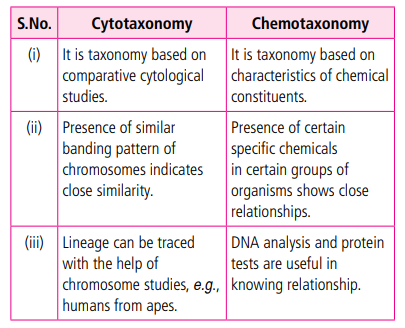
The living world chapter explains the various aspects of naming and classification of the living world. You get to learn about the different habitats of the world such as cold mountains, deciduous forests, oceans, freshwater lakes, deserts, hot springs, etc, you can access check for the living world class 11 notes also to cover all important topics before checking for important questions and answers.
This page provides students with additional CBSE Important Questions on the living world class 11 biology chapter 1, to practice and test their knowledge. These Important Questions will help in annual exam preparation and competitive exams.
Check out: The living world class 11 notes pdf
The Living World Class 11 CBSE Important Questions and Answers
We’ve compiled a list of important questions about the living world biology class 11 chapter 1 that you should not miss while studying for CBSE exams.
Q.1.Who proposed the system of binomial nomenclature?
A.1. Carolus Linnaeus.
Q.2. Why there is a need to standardise the naming of living organisms?
A.2. Millions of plants and animals are known by their local names. These local names vary from place to place, even within a country. Therefore, to avoid confusion, there is a need to standardize the naming of living organisms so that a particular organism is known by the same name all over the world.
Q.3. Who wrote Systema Naturae? What are the fundamentals of taxonomy?
A.3.Linnaeus wrote the book Systema Naturae. The fundamentals of taxonomy are (i) Characterisation, (ii) Identification, (iii) Classification, and (iv) Nomenclature.
Also Check out: Biological Classification Class 11 Notes for NEET
Q.4.Species is a basic taxonomic category. Justify.
A.4.Species is the lowest of a population or basic taxonomic category, which consists of one or more individuals that resemble one another more closely than individuals of other species. The members of a species interbreed freely and are reproductively isolated from others. These features make the species a basic taxonomic category.
Q.5.What is the correct way of writing a scientific name? Illustrate with an example.
A.5.The scientific names are generally in Latin and written in italics. They are Latinised or derived from Latin irrespective of their origin. The first word in a biological name represents the genus while the second component denotes the specific epithet. Both the words in a biological name, when handwritten are separately underlined or printed in italics to indicate their Latin origin. The first word denoting the genus starts with a capital letter while, the specific epithet starts with a small letter, e.g., Mangifera indica
You might also like: Board Exam Writing Skills – 5 Tips to Write Perfect Answers
Q.6.Define taxonomy.
A.6.Taxonomy (GK. taxis – arrangement, nomos – law, de Candolle) is defined as the science dealing with the identification, nomenclature, and classification of organisms. It is the study of rules, principles, and practices of classification, identification, and nomenclature of organisms.
Q.7.What are the fundamental components of taxonomy?
A.7.The fundamental components of taxonomy are (i) Identification, (ii) Classification, and (iii) Nomenclature.
Q.8.Differentiate between cytotaxonomy and chemotaxonomy
A.8.Differences between cytotaxonomy and chemotaxonomy are as follows:
Q.9.List the basic processes for taxonomic studies.
A.9.The basic processes for taxonomic studies are:
(i) Organisms are described on the basis of morphology and other characteristics.
(ii) The description of characteristics helps in the placement of the organisms in various taxa.
(iii) A new taxon can be framed if the organism is different from the existing taxa.
(iv) The correct naming of an organism can be done after placing it in various taxon. A new organism can be given a new name after following the standardised rules.
Q.10.Taxonomists of the modern world felt the need of modern taxonomy over old taxonomy. Why?
A.10.According to the old taxonomy,
(i) Species is the basic unit of taxonomy and can be described on the basis of one or few preserved specimens.
(ii) Organisms are classified on the basis of some limited features.
As more knowledge was gathered about organisms based on variations, many more characters were used to correlate affinities. Due to this, biologists felt the need of modern taxonomy
Assertion and Reason Question for the living world class 11 chapter 1
Q.11. Assertion: Scientific names are generally in Latin.
Reason: Latin is a dead language.
(a) Both assertion and reason are true and reason is the correct explanation of assertion.
(b) Both assertion and reason are true but reason is not the correct explanation of assertion.
(c) Assertion is true but reason is false.
(d) Assertion is false but reason is true
A.11. (a): Scientific names are generally written in Latin because Latin is a dead language and therefore, it will not change in form of spellings and meanings with the passage of time.
Biology Class 11 Chapter 1 Question Answers PDF
You can check: 9 Amazing Biology Facts You Should Know






























